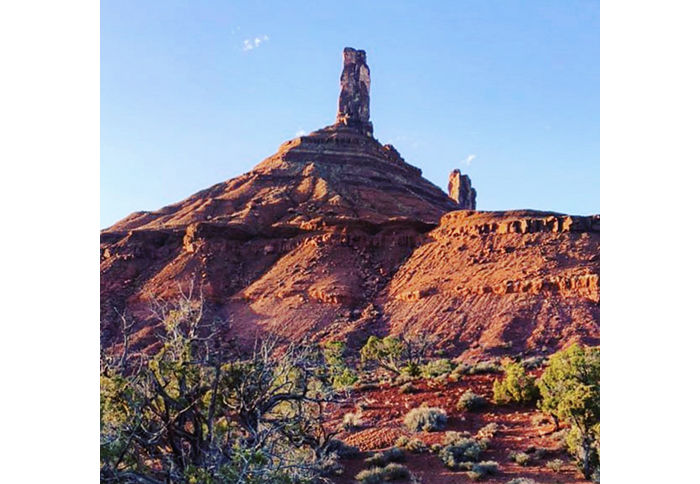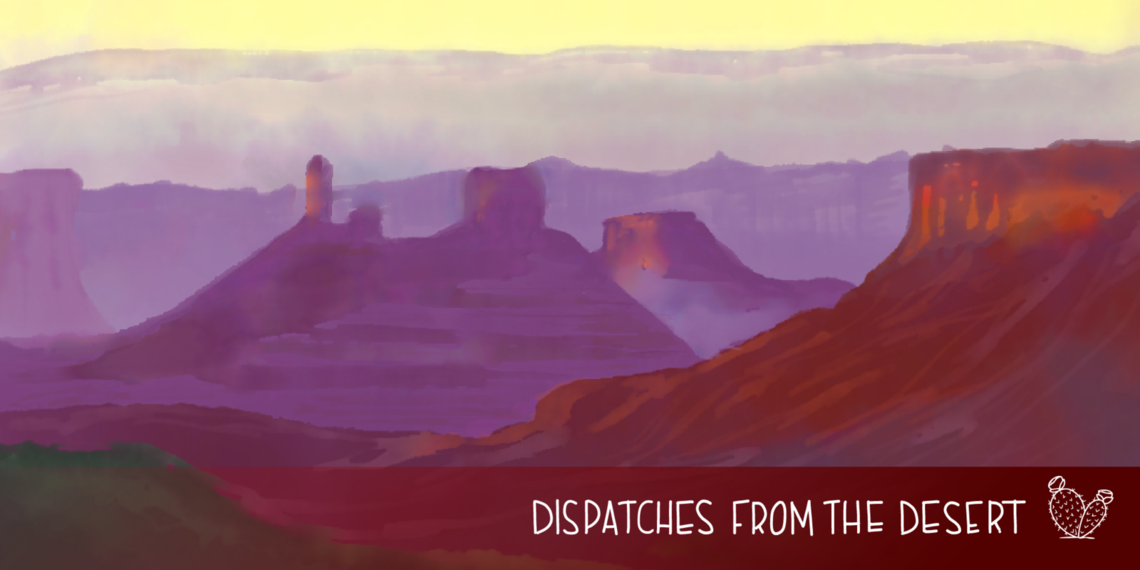30 March 2020
Castle Valley, Utah
First blush of green on cottonwoods
First purple blossom on locoweed
First spring call of a canyon wren
The sweet smell of sage after rain takes my breath all the way down.
Spring in the desert cannot be cancelled.
here is fresh snow this morning in the LaSal Mountains, but the soft red sand underfoot is yielding. At this moment, my heart is yielding to you: doctors, nurses, and health care providers in all capacities who have been called to serve in this spillover of COVID-19. We honor you, support you and want you to know we are by your side–from the custodians to nutrition care services to those of you who find yourselves at home–thank you for all you are carrying and caring for during this epic health crisis.
And to you, dear patients who are being treated for the coronavirus and those seeking special medical care at the University of Utah Hospital, we are mindful of your suffering, physically and emotionally, as you face these challenges largely alone, without having your families by your side. Please know we are holding you close in the faraway nearby.
We are all asking ourselves how we can help. This is the question I have been asking myself daily at home in Castle Valley, just east of Moab, Utah. But when Dr. Tom Miller, Chief Medical Officer of the University of Utah Hospital and dear friend, sent me photographs of the tents and quonset huts set up in anticipation of the coronavirus pandemic now taking hold in Salt Lake City and the intermountain region, and wrote, “We are ready.” I wrote back, “Please put me to work.”

The next thing I knew, Dr. Miller put me in touch with Megan Call, Associate Director of the Resiliency Center in the Office of Wellness and Integrative Health; and Mari Ransco, Director of Patient Experience and Editor-in-Chief of Accelerate. Together we imagined a “Coyote Chaplaincy” rooted in the arts with a cohort of graduate students enrolled in the seminar, “Finding Beauty in a Broken World,” at the Harvard Divinity School.
These students are poets and writers, musicians and photographers, educators, scientists, public health advocates and social justice activists and future priests and pastors. When presented with this opportunity to contribute to this portal of care, they said yes. They have committed to sharing offerings of artistic reflection be it a poem, a song, a photograph or a letter each day for the next several weeks in the name of solidarity as we face this global pandemic together.
As you share your healing gifts as health care providers with those in great need, we commit to sharing our gifts with you in what Lewis Hyde calls “circular giving.” He writes in “The Gift:” “Circular giving differs from reciprocal giving in several ways. First, when the gift moves in a circle no one ever receives it from the same person he gives it to.”
The gift must always move.
This morning, meadowlarks, spring yellow, are singing against a backdrop of red rock cliffs and I see an opening of blue sky in the midst of clouds, a reminder of all things primary. Finding beauty in a broken world is creating beauty in the world we find.
Terry Tempest Williams
Terry Tempest Williams is a writer, naturalist, activist, educator—and patient. In this second “Dispatch from the Desert,” Terry explores embracing the Unseen to acknowledge our interconnectedness and reimagine our changing world.
There’s a compassion wall—a barrier created by the extra precautions COVID-19 requires. Harvard Graduate School of Education student Niharika Sanyal reflects on the pain of the provider, the patient, and the loved ones across the world struck by the pandemic.
Harvard Graduate School of Education student Niharika Sanyal shares a simple story with a powerful message of hope and universal connection.
